“Seth’s Dominion” – Review & Director Interview
An area we find ourselves returning to time and again here on Skwigly is the unique strength animation brings as a component of – or driving force behind – non-fiction storytelling. With animation and documentary becoming increasingly intertwined of late, filmmakers have largely moved away from the lazy “Creature Comforts meets…” approach that dominated the genre for so long. Directors such as Anna Ginsburg, Diane Obomsawin, Tom Schroeder, Marie-Josée Saint-Pierre and Robert Valley have, in recent years, pushed the boundaries of how animated documentary can be defined, either through blurring the lines of where animation and live-action begin and end or eschewing the latter entirely.
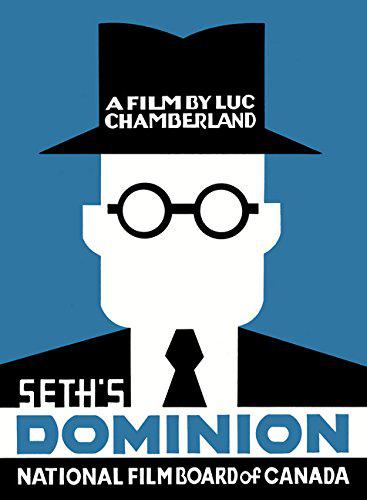 In the case of Luc Chamberland’s longer-form 2014 National Film Board of Canada project Seth’s Dominion, recently released as a DVD/book combo, we’re presented with an approach that, while conceivably more ‘traditional’, makes for a tremendously endearing and watchable film, bringing us the story, in brief, of Canadian cartoon artist Seth. Among the most significant contributors to the world of Montreal publisher Drawn & Quarterly, the multi-Eisner, Harvey, Ignatz and Doug Wright award-winning Seth’s own body of work includes Clyde Fans (2004), George Sprott (2009), Wimbledon Green (2005), It’s a Good Life, If You Don’t Weaken (1996) and the long-running (since 1991) series Palookaville.
In the case of Luc Chamberland’s longer-form 2014 National Film Board of Canada project Seth’s Dominion, recently released as a DVD/book combo, we’re presented with an approach that, while conceivably more ‘traditional’, makes for a tremendously endearing and watchable film, bringing us the story, in brief, of Canadian cartoon artist Seth. Among the most significant contributors to the world of Montreal publisher Drawn & Quarterly, the multi-Eisner, Harvey, Ignatz and Doug Wright award-winning Seth’s own body of work includes Clyde Fans (2004), George Sprott (2009), Wimbledon Green (2005), It’s a Good Life, If You Don’t Weaken (1996) and the long-running (since 1991) series Palookaville.
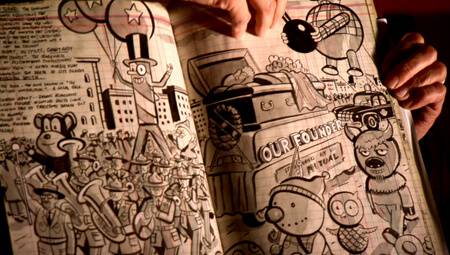
Seth’s Dominion (Dir. Luc Chamberland, ©2014 NFB)
The film is, at its heart, a simply-told portrait of a man whose embracing of a distinctly retro artistic sensibility extends to his own life and personal style in a way that, in its authenticity, sidesteps obnoxious pretension. While documentarians frequently find the temptation to incorporate themselves into the narrative of their subjects too hard to resist, director Luc Chamberland has no such intentions, letting Seth tell his own story through his words and his work via interviews conducted over a seven-year period. The film also occasionally draws on footage from a live reading that offers a look at his ability to engage an audience with charm and conviviality, flying in the face of the reclusive artist stereotype. In these informally-presented talks we’re afforded a more intimate audience with the artist in which we learn, among other things, the origins and challenges of adopting his forename-only nom de plume, a youthful commitment he describes as “highly-disciplined assholism”
What’s especially valuable to fellow artists and fans is the film’s insight into comics as an art form and the process of their creation. Seth’s personal process incorporates unique elements such as the expansion of his storytelling bent to sketchbooks, his ‘rubber stamp’ diaries (a streamlined approach to comic creation of his own invention aided by, as its name suggests, rubber stamps) and the construction of an ever-expanding cardboard city. Drawing on more traditional documentary tropes are scenes such as the average-day-in-the-life, in which the commitment to his work as an artist is balanced with the realities of adult life, as well as talking-head contributions from fellow “Toronto Three” comic artists Joe Matt and Chester Brown as well as Chris Oliveros of Drawn & Quarterly among others. One of the most charming parts of the film is the look at Seth’s relationship with wife Tania Van Spyk and the importance of their cohabitation to his working process.
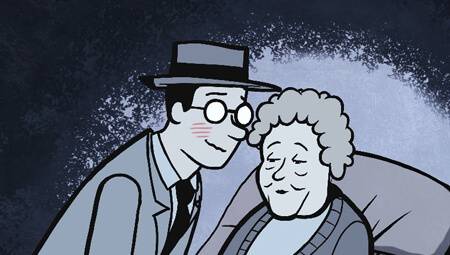
Seth’s Dominion (Dir. Luc Chamberland, ©2014 NFB)
Naturally the doc’s most captivating USP is Luc Chamberland’s use of animation to bring certain comic musings from Seth’s back catalogue to life. Favouring autobiographical reminiscences, the assortment of micro-shorts peppered throughout the film effectively breaks up the pacing and offers those new to Seth’s work a charming introduction to his understated narrative style. While certain segments such as The Creek, The Invisible Life and Hush are generally centered around either remembrances or present-day observations of curious locations that hold a certain significance to the artist, others more directly explore his own formative years, such as Transistor Radio (a snapshot of the lasting impact of his father’s angry outbursts) and Big Boy (lamenting his own self-imposed alienation from maternal affection). While these personal stories rarely paint the picture of a lonely or depressed life, the importance of solitude, silence and a yearning for affection are notable common themes. Accompanied by a wonderful score by Luigi Allemano and presented in muted, largely monochromatic colour palettes, pains have clearly been made by Luc to stay as true to Seth’s artistic process as digital animation production will accommodate.
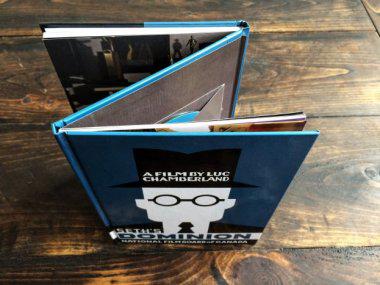
Image via Drawn & Quarterly
Accompanying the original 2014 film are two additional animated Seth adaptations that Luc has helmed, differing from those presented in the documentary in that they take on the artist’s works of outright fiction. In The Death of Kao-Kuk, a Sci-Fi mini-epic, we see Seth’s ability to take on broader concepts while staying consistent with his prevailing themes of isolation. The Great Machine, while less grandiose, proves to be a compelling series of visual ideas more in line with the biographical shorts’ appreciation for seemingly abandoned spaces. A much appreciated addition to the package is the full Drawn & Quarterly talk Seth Speaks (that the documentary includes glimpses of) held in 2009 to mark the launch of George Sprott. In full, the nearly hour-long conference is perfectly suited to both existing and new fans of Seth as a companion piece to the main feature.
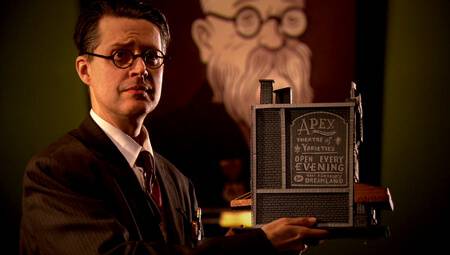
Seth’s Dominion (Dir. Luc Chamberland, ©2014 NFB)
Also included is an interview with Luc Chamberland – billed as a Making Of, though sadly offering little by way of production footage or a direct look at the animation process – discussing the challenges of adapting the work and keeping a harmonious working relationship with Seth afloat. What literally binds the whole package together beautifully is a photo album/mini-anthology triptych presentation that is a joy to peruse. With home media apparently in the autumn of its years, a little extra effort goes a long way and all involved have done a tremendous job of crafting a more than worthy addition to both Seth’s bibliography and the NFB’s established history of high-quality filmmaking.
Seth’s Dominion is available now through Drawn & Quarterly. To learn more about director Luc Chamberland watch our video interview below:

